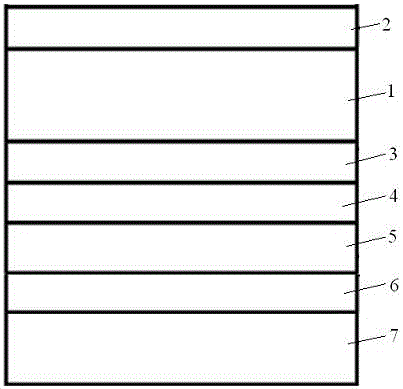A kind of production technology of self-cleaning solar cell module
A solar cell and solar cell technology, applied in electrical components, circuits, photovoltaic power generation, etc., can solve the problems of unclean cleaning and care costs, inability to transmit and absorb light, affecting the photoelectric conversion efficiency and service life of solar panels, etc. To achieve the effect of saving cleaning costs and cleaning time, simple production process operation, and increasing self-cleaning function
- Summary
- Abstract
- Description
- Claims
- Application Information
AI Technical Summary
Problems solved by technology
Method used
Image
Examples
Embodiment Construction
[0018] In order to deepen the understanding and recognition of the present invention, the present invention will be further described and introduced below in conjunction with the accompanying drawings.
[0019] Such as figure 1 As shown, a self-cleaning solar cell module includes tempered glass 1, EVA film 3, anti-reflection film 4, monocrystalline silicon solar cells 5, EVA film 6, back plate 7, aluminum alloy frame 8 and DC connection box, the tempered glass 1, EVA film 3, anti-reflection film 4, monocrystalline silicon solar cells 5, EVA film 6 and back plate 7 are sequentially laminated to form a component laminate, using the aluminum alloy frame and silica gel to seal and encapsulate the module laminate, the monocrystalline silicon solar cell 5 is electrically connected to the DC junction box after being welded and connected to the bus bar, and the electric energy generated by the solar cell module is output to the outside through the DC junction box In the system, the e...
PUM
| Property | Measurement | Unit |
|---|---|---|
| thickness | aaaaa | aaaaa |
| transmittivity | aaaaa | aaaaa |
Abstract
Description
Claims
Application Information
 Login to View More
Login to View More - R&D
- Intellectual Property
- Life Sciences
- Materials
- Tech Scout
- Unparalleled Data Quality
- Higher Quality Content
- 60% Fewer Hallucinations
Browse by: Latest US Patents, China's latest patents, Technical Efficacy Thesaurus, Application Domain, Technology Topic, Popular Technical Reports.
© 2025 PatSnap. All rights reserved.Legal|Privacy policy|Modern Slavery Act Transparency Statement|Sitemap|About US| Contact US: help@patsnap.com

